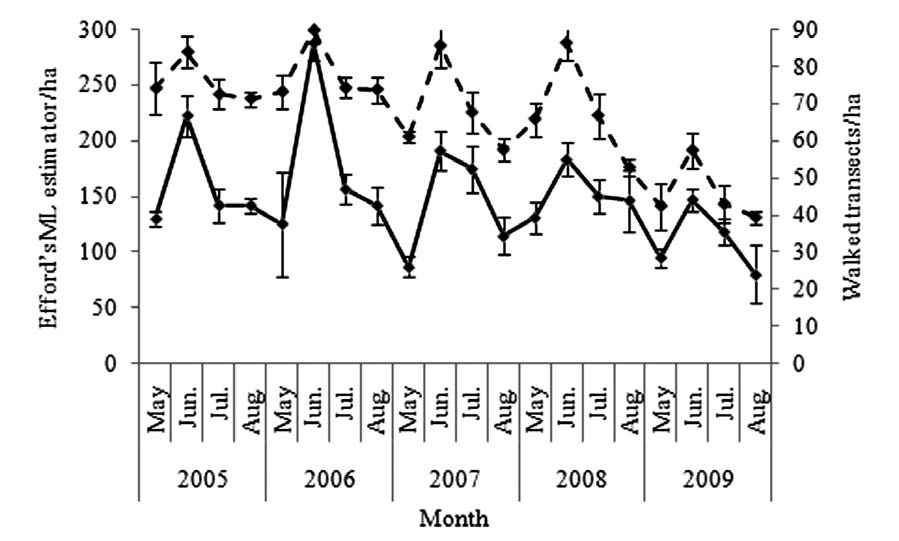Quick and accurate estimation of population density in large scale is required in both scientific studies and wildlife management programs. However, effective estimation of small mammal abundance is usually difficult and timeconsuming due to the body size and wide distribution of these animals. To test the efficiency of different methods in assessing small mammal densities, population dynamics of plateau pikas (Ochotona curzoniae, Hodgson) were studied from April 2005 to August 2009 in alpine grassland (Kobresia humilis) at a height of of 3846 m a.s.l. We compared the precision of walked transects method with mark-recapture method using Efford’s maximum likelihood spatial estimator (ML). Significant positive correlation was found between walked transects and Efford’s ML estimator (r2 = 0.58, P <0.001). The densities calculated with walked transects were about twice lower than those obtained using the mark-recapture method over the study period (i.e., summer). Nevertheless, the walked transects method remains useful for relative density estimation. Hence, the walked transects method is recommended for use as an index of relative density in large-scale assessment in alpine grassland where most small mammals are active and easily detected in an open habitat.

Fig. Population densities of plateau pika (individuals per ha) estimated using the walked transects
method (dashed line) and Efford’s ML estimator based on mark-recapture data (solid line). Results are
expressed as mean ± SE. Error bars represent 95% confidence limits.
